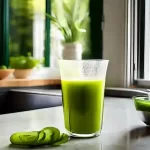Healthy Eating and Weight Loss
Are you tired of diets that leave you feeling hungry and deprived? Do you want to lose weight without giving up your favorite foods? If so, the volumetric diet may be the perfect choice for you. In this article, we’ll explore the principles of the volumetric diet, its benefits for weight loss and health, and how to follow it to achieve long-lasting results.
What is the Volumetric Diet?
The volumetric diet is a weight-loss program that focuses on eating foods that are low in calories but high in volume. The idea behind the diet is that you can eat a larger amount of food without consuming as many calories, which will help you feel fuller and satisfied. The diet was created by Barbara Rolls, Ph.D., a nutrition researcher at Penn State University, who wrote the book “The Volumetrics Eating Plan” in 2007.
The key principle of the volumetric diet is to eat foods that have a low energy density. Energy density is the number of calories in a given amount of food. Foods that are high in water and fiber tend to be low in energy density, while foods that are high in fat and sugar tend to be high in energy density. By focusing on low-energy-density foods, you can eat more food for fewer calories, which can help you feel full and satisfied while consuming fewer calories overall.
How Does the Volumetric Diet Work?
The volumetric diet works by changing the way you think about food. Instead of focusing on counting calories or eliminating entire food groups, you’ll learn to choose foods that are nutrient-dense and filling. This approach can help you feel satisfied while consuming fewer calories, which can lead to weight loss.
The volumetric diet is based on the following principles:
- Focus on low-energy-density foods: Foods that are high in water, fiber, and volume but low in calories are the foundation of the volumetric diet. This includes fruits, vegetables, whole grains, lean proteins, and low-fat dairy.
- Choose nutrient-dense foods: In addition to being low in calories, the foods you eat on the volumetric diet should be high in vitamins, minerals, and other nutrients that are essential for good health.
- Practice mindful eating: Paying attention to your hunger and fullness signals can help you avoid overeating and make better food choices. You’ll learn to savor your food, eat slowly, and stop eating when you’re full.
- Control portion sizes: While you can eat a larger volume of food on the volumetric diet, portion control is still important. You’ll learn to measure your food and practice portion control to ensure that you’re not consuming too many calories.
What Foods are Allowed on the Volumetric Diet?
The volumetric diet emphasizes whole, nutrient-dense foods that are low in energy density. Here are some examples of foods that are allowed on the diet:
- Fruits: All types of fruits are allowed on the volumetric diet, including berries, apples, bananas, and oranges. They are high in water and fiber and can help satisfy your sweet tooth.
- Vegetables: The volumetric diet encourages eating a variety of colorful vegetables, such as leafy greens, broccoli, carrots, and peppers. They are rich in nutrients and low in calories.
- Grains: Whole grains such as quinoa, brown rice, and whole wheat pasta are allowed in moderation on the volumetric diet. They are high in fiber and can help keep you feeling full.
- Protein: Lean protein sources such as chicken, turkey, fish, and tofu are allowed on the volumetric diet. They are important for building and repairing muscle tissue and can help keep you feeling full.
- Low-fat dairy: Low-fat milk, yogurt, and cheese are allowed on the volumetric diet. They are good sources of calcium and protein, and can be a satisfying snack.
- Water: Water is an essential part of the volumetric diet. Drinking plenty of water throughout the day can help you stay hydrated and feel full.
What Foods Should be Avoided on the Volumetric Diet?
The volumetric diet is not a restrictive diet, but there are some foods that should be limited or avoided. These include:
- High-energy-density foods: Foods that are high in fat, sugar, and calories should be limited on the volumetric diet. This includes fast food, fried foods, desserts, and sugary drinks.
- Processed foods: Highly processed foods that are low in nutrients and high in calories should be avoided on the volumetric diet. This includes chips, candy, and other snacks.
- Large portions: While the volumetric diet allows for larger portions, it’s important to still practice portion control. Eating large portions of any food can lead to weight gain.
What are the Health Benefits of the Volumetric Diet?
The volumetric diet is not only effective for weight loss, but it also has numerous health benefits. Here are some of the benefits of following the volumetric diet:
- Lower risk of chronic diseases: The volumetric diet emphasizes whole, nutrient-dense foods that are rich in vitamins, minerals, and antioxidants. These foods can help lower your risk of chronic diseases such as heart disease, diabetes, and cancer.
- Improved digestive health: The volumetric diet is rich in fiber, which can help promote healthy digestion and prevent constipation.
- Lower cholesterol: The volumetric diet is low in saturated and trans fats, which can help lower cholesterol levels and reduce the risk of heart disease.
- Improved blood sugar control: The volumetric diet emphasizes low-energy-density foods that are rich in fiber and nutrients. This can help improve blood sugar control and reduce the risk of diabetes.
Is the Volumetric Diet Sustainable?
The volumetric diet is a sustainable diet that can be followed for the long term. Unlike fad diets that are restrictive and unsustainable, the volumetric diet is based on healthy eating principles that can be incorporated into your lifestyle. By focusing on nutrient-dense, filling foods, you can enjoy a variety of foods while still achieving your weight loss and health goals.
Tips for Following the Volumetric Diet
Here are some tips for following the volumetric diet:
- Plan your meals: Planning your meals in advance can help you make healthier choices and avoid temptation.
- Use measuring cups and spoons: Measuring your food can help you practice portion control and avoid overeating.
- Eat slowly: Eating slowly can help you savor your food and feel full more quickly.
- Choose whole, nutrient-dense foods: Eating whole, nutrient-dense foods can help you feel satisfied while consuming fewer calories.
- Stay hydrated: Drinking plenty of water throughout the day can help you stay hydrated and avoid overeating.
In conclusion, the volumetric diet is a healthy and sustainable way to lose weight and improve your health. By focusing on nutrient-dense, low-energy-density foods, you can feel full and satisfied while consuming fewer calories. With the right mindset and some simple strategies, you can achieve your weight loss and health goals with the volumetric diet. Try it out and see the difference it can make in your life.







